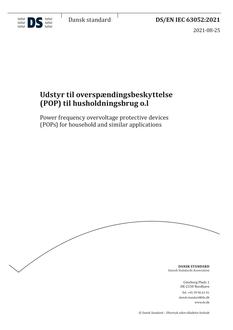-
-
Available Formats
- Availability
- Priced From ( in USD )
-
Available Formats
-
- Immediate download
- $78.00
- Add to Cart
-
- Printed Edition
- Ships in 1-2 business days
- $78.00
- Add to Cart
Customers Who Bought This Also Bought
-

DANSK DSF/PREN ISO 21011
Priced From $40.00 -

DANSK DS/ISO 2808
Priced From $101.00 -

DANSK DS/EN IEC 63052
Priced From $143.00 -

DANSK DS/ISO 4861
Priced From $44.00
About This Item
Full Description
This European Standard specifies the extraction and clean-up procedures of the sampled PCDDs/PCDFs. It is integral part of the complete measurement procedure. The use of the other two parts prEN 1948-1:2005 and prEN 1948-3:2005 describing sampling or identification and quantification, respectively, is necessary for the determination of the PCDDs/PCDFs.
This European Standard has been designed to measure PCDD/PCDF concentrations at about
0,1 ng I-TEQ/m3 in stationary source emissions.
This European Standard specifies both method validation and a framework of quality control requirements which shall be fulfilled by any PCDD/PCDF extraction and clean-up methods to be applied. Some methods are described in detail in Annex A as examples of proven procedures.
Each of the three sampling methods (Part 1) can be combined with the extraction and clean-up (Part 2) and the identification and quantification (Part 3) to complete the measurement procedure.
During comparison measurements of the three sampling methods on municipal waste incinerators at the level of about 0,1 ng I-TEQ/m3 these methods have been deemed comparable within the expected range of uncertainty. Validation trials were performed on the flue gas of municipal waste incinerators at the level of about 0,1 ng I-TEQ/m3 and a dust loading of from 1 mg/m3 to 15 mg/m3. Although this European Standard is primarily developed and validated for gaseous streams emitted by waste incinerators, the practical experience shows that it can be applied for wide concentration ranges and various emission sources.
The procedure described in the three parts of prEN 1948:2005 specifies requirements which shall be met in order to measure the 17 congeners necessary to calculate the total I-TEQ (see Table A.1 of
prEN 1948-1:2005).
Besides the determination of PCDDs/PCDFs the described measurement methods are suitable for determination of other low-volatile substances, e.g. of dioxin-like PCBs (details for sampling and analyses se





